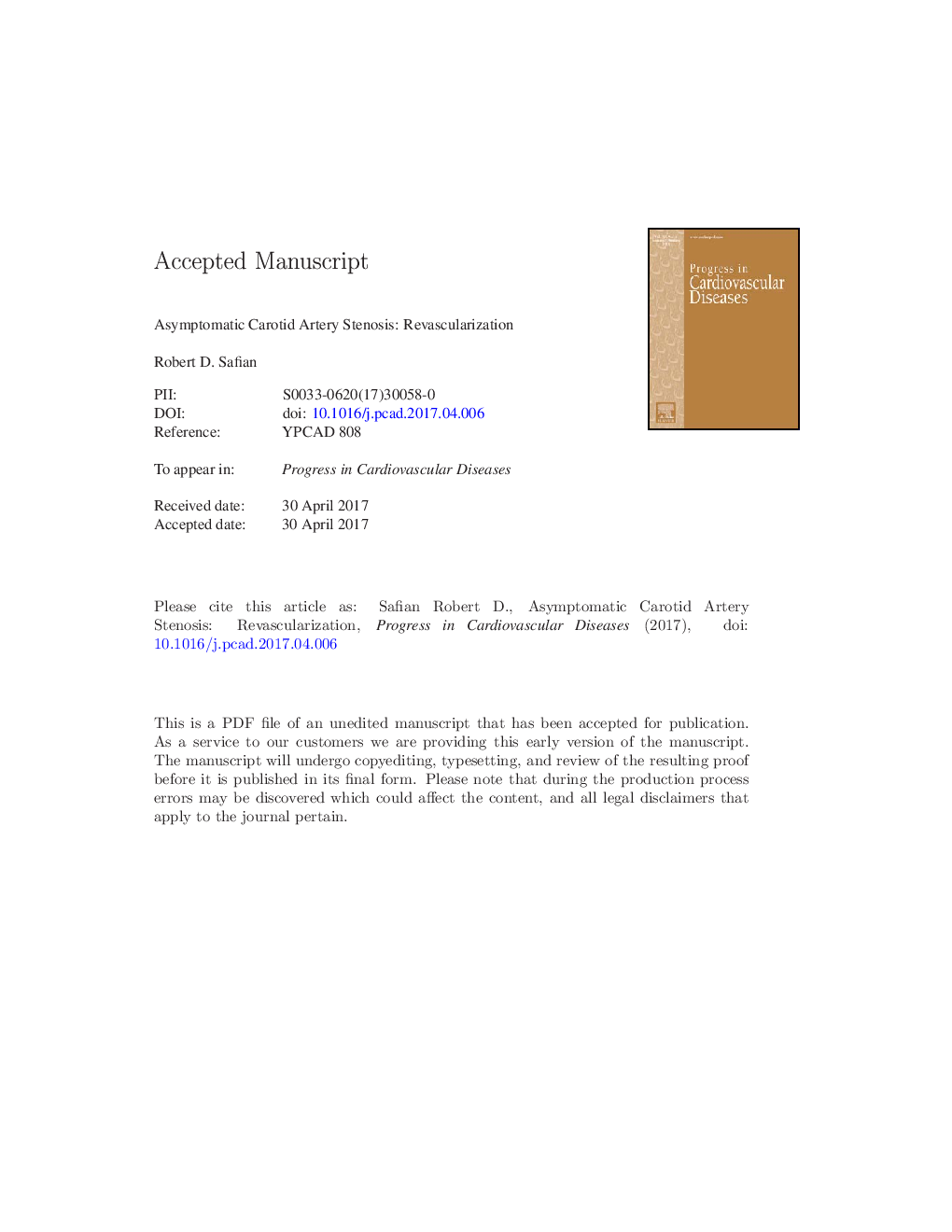| Article ID | Journal | Published Year | Pages | File Type |
|---|---|---|---|---|
| 5619561 | Progress in Cardiovascular Diseases | 2017 | 38 Pages |
Abstract
In patients with carotid stenosis, the most common cause of stroke is atheroembolization, and the risk is strongly related to stenosis severity and symptomatic status (stroke or transient ischemic attack within 6Â months). Carotid revascularization by carotid endarterectomy (CEA) or carotid artery stenting (CAS) results in plaque “passivation” by lumen enlargement, plaque removal, or plaque coverage with subsequent endothelialization. While there is considerable circumstantial evidence linking a decrease in the risk of stroke to the use of “optimal medical therapy (OMT)”, the components of OMT have not been defined, and such therapy has not been rigorously evaluated in any randomized clinical trial (RCT) compared with revascularization. Studies of other vascular patients suggest that statins decrease the risk of stroke by anti-inflammatory effects, rather than cholesterol reduction. The Carotid Revascularization Endarterectomy versus Stent Trial (CREST-2) is currently randomizing standard-risk patients with asymptomatic severe carotid stenosis to OMT alone versus OMT plus CEA or CAS, but results are not expected until 2020. In the meantime, data from several “landmark” trials of CEA versus aspirin demonstrated 45-65% reduction in the 5-year risk of stroke after CEA. Several RCTs demonstrate superiority of CAS over CEA in high-risk patients (those at high-risk for CEA), and equivalence of CAS and CEA in standard-risk patients (those at acceptable risk for CEA). Compared with CEA, CAS is associated with significantly less periprocedural myocardial infarction, cranial nerve injury, and neurological injury (cranial nerve injury plus stroke); higher risk of minor stroke; and similar risk of long-term stroke. Features that increase the risk of CAS include complex aortic arch and carotid anatomy, and features that increase the risk of CEA include severe underlying cardiopulmonary disease and hostile neck anatomy; age>Â 80Â years, especially those with baseline cognitive impairment, are at higher risk for stroke after CEA and CAS.
Keywords
Related Topics
Health Sciences
Medicine and Dentistry
Cardiology and Cardiovascular Medicine
Authors
Robert D. Safian,
